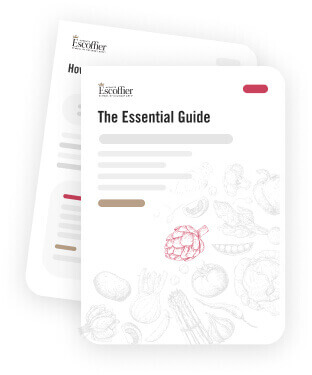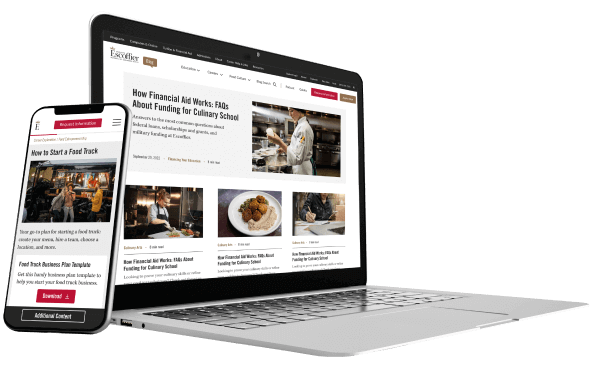Listen to This Article:
Open any baking cookbook and you’ll find vanilla listed right alongside flour, sugar, and salt as one of those humble staples every pantry should have. But vanilla? Humble isn’t quite the word. It’s complex, aromatic, and often misunderstood.
Used in everything from cookies to custards, vanilla is both ubiquitous and mysterious. You might wonder: what’s the difference between pure vanilla extract and vanilla flavoring? Is vanilla bean paste worth the hype? And what about vanilla beans themselves?
In this guide, we’ll explore the sweet, fragrant world of vanilla, and help you choose the right one for your next bake.
A Brief History of Vanilla
Vanilla’s roots trace back to ancient Mesoamerica, where the Totonac people of modern-day Mexico first cultivated the vanilla orchid. When the Aztecs conquered the Totonacs in the 15th century, they adopted vanilla to flavor a spiced cacao drink. Spanish colonizers later brought it to Europe in the 16th century, and from there, it spread globally. Although many people believe vanilla originated in Madagascar, it instead found its way there via French colonies in the 18th century.
Praised for its rich aroma and flavor, vanilla quickly became a sought-after ingredient. But the plant is notoriously picky, only thriving in tropical climates and requiring hand-pollination outside its native region. Even today, growing and curing vanilla is a slow, labor-intensive process. It’s no wonder it’s the second-most expensive spice in the world, after saffron.
As demand grew for this exotic and delicious flavor, so did the need for cheaper alternatives. Enter synthetic vanillin, the main component in most commercial “vanilla flavoring” products.
Today, vanilla is available in many forms, from whole beans to paste, extract, and flavoring. Each has its place in the kitchen, which we’ll explore next.
Vanilla Comparison Chart
Choosing the right vanilla comes down to your recipe, flavor goals, and budget.
| Type | Flavor Profile | Best Used For | Cost | Substitution Ratio | Notes |
|---|---|---|---|---|---|
| Whole Vanilla Bean | Deep, complex, floral, visually impressive | Custards, ice cream, pastry cream, syrup, buttercream | $$$$$ | 1 bean = 1 to 1.5 tsp extract or paste | Best when vanilla is the star; slice and scrape seeds |
| Vanilla Extract | Smooth, mellow, balanced | Cookies, cakes, muffins, quick breads | $$ | 1 tsp extract = 1 tsp paste or ~1 bean | Pantry staple; good all-purpose vanilla |
| Vanilla Emulsion | Rich and robust | Icings, frostings, high heat baked goods, no-bake products | $$ | 1 tsp emulsion = 1 tsp extract | A favorite for commercial baking and large-batch production |
| Vanilla Bean Paste | Bold, concentrated, with visible flecks | Buttercream, whipped cream, ice cream, custard, panna cotta | $$$ | 1 tsp paste = 1 tsp extract or 1 bean | Adds flavor and visual appeal without needing a pod |
| Vanilla Flavoring | Flat, one-dimensional, synthetic | Large-batch baking, commercial mixes, basic frostings | $ | 1 tsp flavoring = 1 tsp extract (though will likely have a weaker flavor and less nuance) | Made from synthetic vanillin; lacks nuance of real vanilla |
Types of Vanilla and How to Use Them
Vanilla comes in several forms, each with its own strengths, flavor profile, and best uses in the kitchen.
Whole Vanilla Bean
The vanilla bean is a long, dark brown pod that’s slightly oily to the touch and highly aromatic. It’s the whole, cured fruit of the vanilla orchid.
The flavor is intensely rich, floral, and full-bodied, with visible specks of real vanilla. To use a vanilla bean, carefully split it in half lengthwise with a sharp knife and scrape out the seeds (sometimes called “vanilla caviar”) from the pod.
While not limited to liquid use, whole vanilla beans are ideal for infusions. For example, when making crème pâtissière (pastry cream), you’ll steep both the seeds and pod in warm milk to infuse its classic flavor. Afterward, you can rinse the pod to remove any residue and store it in granulated sugar to create vanilla sugar.
Best Uses for Vanilla Beans: Due to their cost, vanilla beans are best used where their depth of flavor and presence of seeds can really shine—think crème pâtissière, syrups, ice cream bases, or baked custards like crème brûlée.
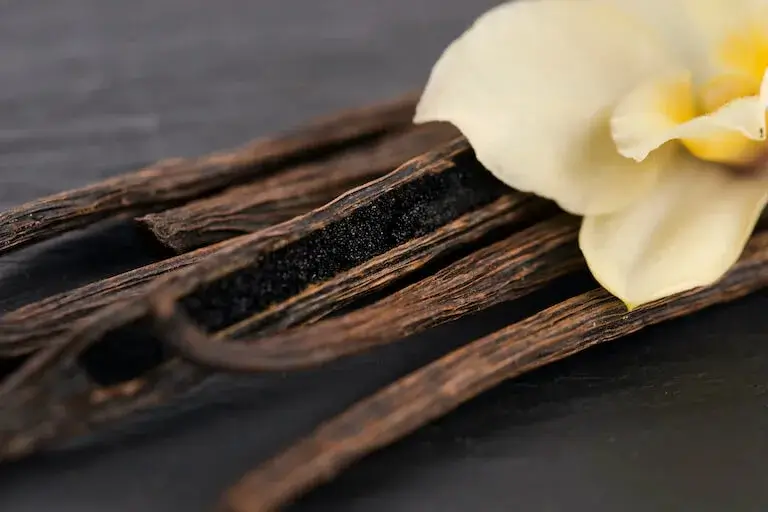
Whole vanilla beans contain thousands of aromatic seeds that deliver deep, complex flavor.
Pure Vanilla Extract
Beloved by professional chefs and home bakers alike, pure vanilla extract is the most commonly used form of vanilla. It offers a smooth, mellow flavor with floral or smoky notes depending on the origin of the beans. The extract is made by soaking vanilla beans in alcohol over several months to extract flavor.
The term “pure” carries a lot of weight here. It’s the only FDA-regulated label for vanilla extract. To qualify as pure vanilla extract on the label, the extract must derive all its flavor from real vanilla beans (no added flavors) and contain at least 35% alcohol and 13.3 ounces of beans per gallon.
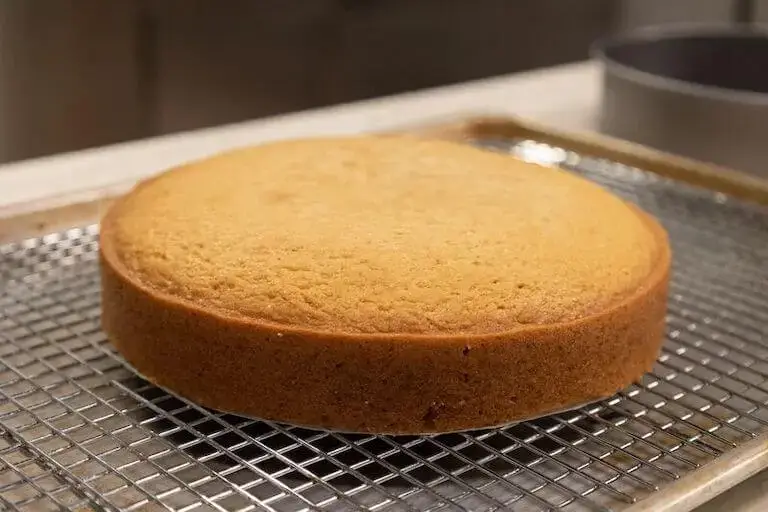
Vanilla extract is a staple in everyday baking, like classic vanilla cake.
These tight guidelines mean that a good, quality vanilla extract can be expensive. For those who only bake occasionally, one nice bottle of vanilla extract will last a long time. For more avid bakers, it might be a good idea to create your own homemade variation. It’s more cost effective than store-bought and easier than ever. All you’re doing is pouring alcohol over split vanilla beans and letting the concoction age over time. Plus you can control the intensity of the vanilla flavor.
Best Uses for Vanilla Extract: Perfect for baked goods like cookies, cakes, brownies, and quick breads where vanilla enhances other flavors.
How to Make Vanilla Extract
You’ll need:
- 1 ounce vanilla beans (about 8 beans or 20g total)
- 1 cup (8 ounces) 80 proof vodka
- 8 ounce bottle or jar
Split the vanilla beans lengthwise and place both the pods and seeds into your jar. Pour in the vodka, making sure the beans are fully submerged. Seal the jar and let it steep for at least 6 months, though 12 months will yield even deeper flavor. For a fun variation, try using bourbon or rum instead of vodka.
Vanilla Emulsion
Vanilla emulsion is a water-based, alcohol-free alternative to traditional vanilla extract, known for its rich, robust flavor and excellent performance in high-heat baking. It is thicker and creamier than extract, and because it doesn’t “bake out” at high temperatures like alcohol-based extracts often do, vanilla emulsion is a favorite among professional bakers and large-batch producers.
In most recipes, vanilla emulsion can be used at a 1:1 ratio with extract. However, because its flavor is often more concentrated, you may want to use slightly less in no-bake recipes to avoid overpowering the dish. While emulsions are typically shelf-stable and do not require refrigeration, it’s always best to check the label—especially for natural or artisanal versions that may have different storage needs.
Best Uses: Icings, frostings, high-heat baked goods, as well as no-bake products. It is especially valued in commercial and large-batch producers where you can’t afford to have flavor loss.
Vanilla Bean Paste
Vanilla bean paste is a thick, syrupy blend of pure vanilla extract, ground vanilla bean seeds, and a binder like sugar or gum. It delivers the signature speckled look of real vanilla beans without the need to split and scrape a pod.
It’s known for having a bold, concentrated flavor, often described as deeper and more intense than standard vanilla extract. That makes it ideal for recipes where you want both a strong vanilla presence and those beautiful black flecks, like buttercream, custard, whipped cream, or ice cream.
If you’re wondering, “Is vanilla bean extract better than vanilla extract?” it really depends on the recipe. Vanilla bean paste offers both a flavor and visual upgrade when vanilla is meant to be the star of the show. In contrast, vanilla extract works well in baked goods like cookies or cakes, where vanilla plays more of a background role. Think of paste as the lead actor in recipes where flavor and appearance matter, and extract as the reliable supporting act that enhances without stealing the scene.
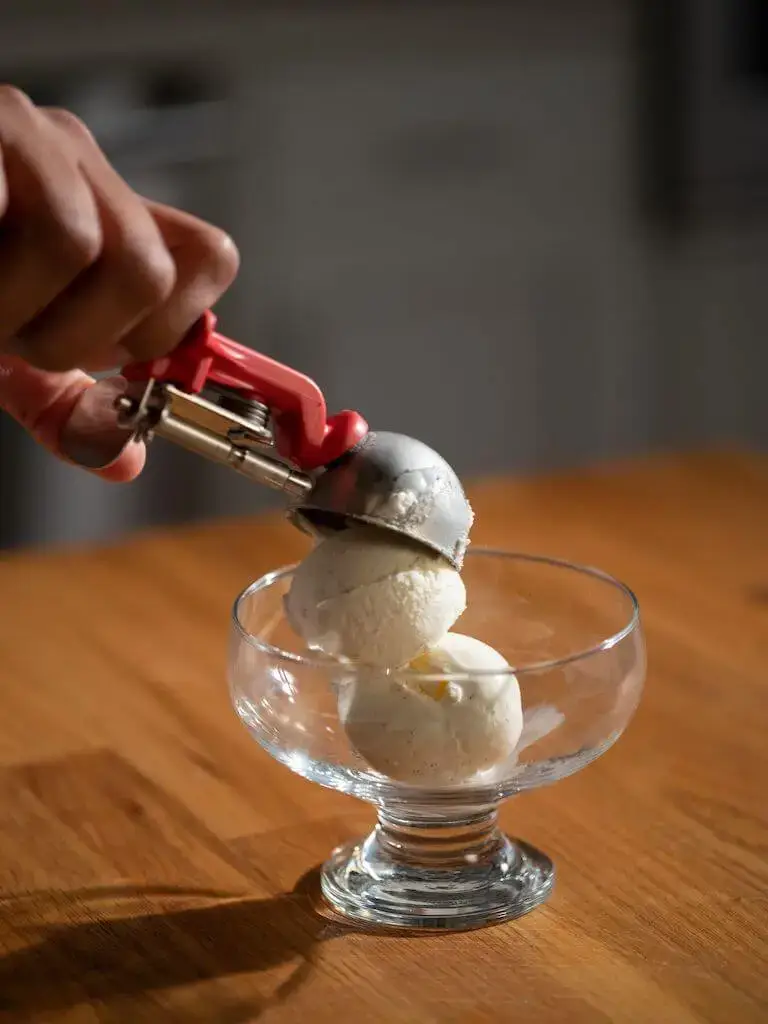
Vanilla bean paste adds bold flavor and signature specks to frozen desserts.
Can I substitute vanilla bean paste for vanilla extract?
You can substitute vanilla bean paste for vanilla extract using a 1:1 ratio, even though paste has a slightly fuller flavor. That’s because paste isn’t overwhelmingly stronger, it just adds more depth and a touch of elegance. One teaspoon of paste won’t overpower your recipe, but it will give you a richer, more nuanced vanilla note, especially in creamy or subtly flavored desserts.
Best Uses: Recipes where both flavor and appearance matter. You’ll get visible seeds and a boost of richness without having to use a whole vanilla bean. Perfect for buttercreams, custards, whipped cream, or ice cream.
Vanilla Flavoring
Vanilla flavoring may look similar to vanilla extract, but it’s not the same in quality or origin. While extract is made from real vanilla beans, flavoring is typically made from synthetic vanillin—the primary flavor compound in vanilla—produced from sources like wood pulp, clove oil, or even petrochemicals.
If you’ve ever wondered “where does vanilla flavoring come from?” the answer might surprise you. Most commercial vanilla flavoring is derived from lignin, a natural compound found in wood, making it a far cry from the actual vanilla orchid.
Because it contains little or no real vanilla, flavoring often lacks the depth and complexity that pure vanilla extract or paste provides. The taste can be one-dimensional and occasionally leaves a chemical aftertaste, especially in simpler or uncooked applications.
That said, vanilla flavoring does have a place, particularly in budget-conscious baking, where cost matters more than nuance. It can work in boxed cake mixes or or kid-friendly treats where a bold vanilla presence isn’t the goal.
How to Read a Vanilla Label
What is good vanilla? Look for labels that say “pure vanilla extract.” This means it’s made from real vanilla beans. Avoid products labeled “vanilla flavor” or “imitation vanilla,” which are often made with synthetic vanillin.
Regional Varieties of Vanilla
Now that we’ve covered the different forms vanilla can take, let’s take a closer look at where it comes from. The region where vanilla is grown can influence everything from aroma to flavor profile. Here’s a quick guide to some of the most common regional varieties:
- Mexico: Often considered the original and most classic vanilla, Mexican vanilla pairs beautifully with warm spices like cinnamon and cloves. A marriage of sweet and woody notes, it’s rich, smooth, and versatile.
- Indonesia: Known for its smoky, woody notes, Indonesian vanilla holds up well to high-heat cooking and baking, thanks to its unique cultivation and curing methods. The pods are often picked early and dried quickly over high heat, which differs from traditional methods that involve blanching and sweating. Because of this durability, Indonesian vanilla is frequently used in commercial and industrial applications.
- Madagascar (Bourbon Vanilla): This is the most widely available variety and what most people associate with a “true” vanilla flavor. It’s sweet, creamy, balanced, and familiar, making it ideal for all-purpose use.
- Tahitian: With floral and fruity undertones (like cherry and almond), Tahitian vanilla has a slightly more exotic, perfumed profile. It shines in cold or lightly cooked applications like whipped cream, panna cotta, or custards.
- Uganda: Ugandan vanilla is bold and creamy, similar to Madagascar vanilla, but with subtle chocolate notes, making it a luxurious option for desserts where depth of flavor matters.
What Type of Vanilla Is Best for Baking? A Comparison
The best vanilla to use depends on your recipe, how prominent you want the flavor to be, and whether appearance plays a role. As your baking skills grow, you can even start pairing regional vanillas with specific recipes for deeper, more intentional flavor.
- Vanilla Bean: Ideal for custards, ice cream bases, and other recipes with a liquid component. The seeds and pod release their full flavor when steeped in warm milk, cream, or syrup. Use when you want the most depth and a touch of tradition.
- Vanilla Bean Paste: A convenient alternative to whole beans that still gives you bold flavor and visible vanilla flecks. Great for buttercream, whipped cream, and high-end baked goods. Less expensive than beans, but more than extract.
- Vanilla Emulsion: The best choice for large batch or commercial baking, because the flavor will not bake out. Provides a rich, pronounced vanilla flavor that holds up through baking better than extract does.
- Pure Vanilla Extract: The go-to choice for everyday baking. Perfect for cookies, cakes and their decorations, muffins, and quick breads where vanilla supports rather than steals the spotlight.
- Vanilla Flavoring: Best reserved for budget baking when nuanced flavor isn’t as important. Works fine in basic cakes and frostings.
When in doubt, vanilla extract is your safest bet.
Can You Substitute Vanilla? Yes, Here’s How
If you’re out of vanilla extract, there are a few substitutes that can work in a pinch. Just keep in mind they’ll shift the flavor slightly.
Almond extract is much stronger, so use only a quarter to half the amount your recipe calls for. It brings a sweet, nutty, almost cherry-like note that doesn’t replicate vanilla’s creamy warmth, but still works well in cookies, quick breads, or frostings.
Maple syrup is another option and can be used in equal measure: one teaspoon of maple syrup for one teaspoon of vanilla extract. It adds a mild, cozy sweetness that pairs nicely with baked goods like banana bread, apple cake, or anything already featuring brown sugar or warm spices.
Vanilla powder is a great substitute if you want to avoid adding liquid, like when working with fondant, or preserve a light color, as in meringues or whipped cream. Most powders can be used at a 1:1 ratio, but it’s worth checking the label since some are more concentrated.
Chef Instructor Tammie Barnhill sometimes uses Godiva white chocolate liqueur in place of vanilla, explaining that it gives a gentle white chocolate flavor with some vanilla notes, though they are milder than pure vanilla.
“The liqueur actually contains less alcohol than extract by volume,” chef Tammie says. “Since it is an alcohol base, it can cook out of a recipe, so I put it in frostings and simple syrups that I drizzle on cakes—that do not require heating. The liqueur is less concentrated than an extract, so if a recipe calls for 1 teaspoon vanilla extract, you will need 1 to 1.5 tablespoons of the liqueur to get a noticeable flavor. Too much, however, and your product will become bitter.”
White Chocolate Liqueur Buttercream
Recipe courtesy of chef instructor Tammie Barnhill
8 oz softened butter
15 – 16 oz powdered sugar, sifted
2-3 TBLS Godiva White Chocolate Liqueur
1/2 tsp vanilla extract (for extra warmth)
1-2 TBLS heavy cream or milk as needed for consistency.
Pinch of salt.
However, if vanilla is meant to shine, like in vanilla pudding, crème brûlée, or a simple vanilla cake, it’s best to wait until you have the real thing on hand.
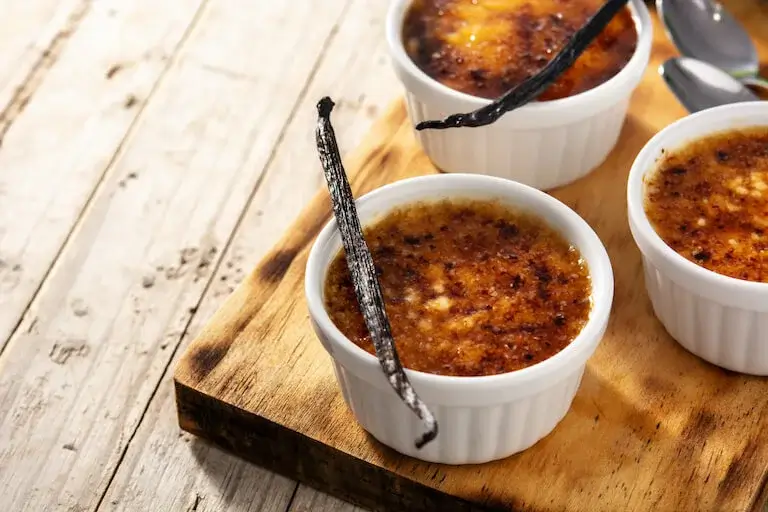
Crème brûlée is one of the best ways to showcase the depth of real vanilla bean flavor.
Loved Learning About Vanilla? Keep Going
Now that you know the difference between beans, pastes, extracts, and flavorings, you can start choosing the right vanilla for every recipe, not just the one you happen to have on hand. Whether you’re reaching for a whole pod to steep in cream or adding a splash of extract to your favorite cookie dough, balancing cost with flavor impact is part of becoming a more confident baker.
If you loved diving into the details of vanilla, just imagine what else you could explore. Take your skills to the next level and turn your passion for baking into something more. Learn the art and science behind fundamentals with a baking and pastry program designed to help you grow from curious home baker to confident creator.
IF YOU ENJOYED THIS ARTICLE, TRY THESE NEXT:- How to Start a Bakery Business from Home
- Pastry Chef vs. Baker: What’s the Difference?
- How You Can Open a Bakery: 7 Steps to Success
*This article was originally published on June 17, 2019, and has been updated.
